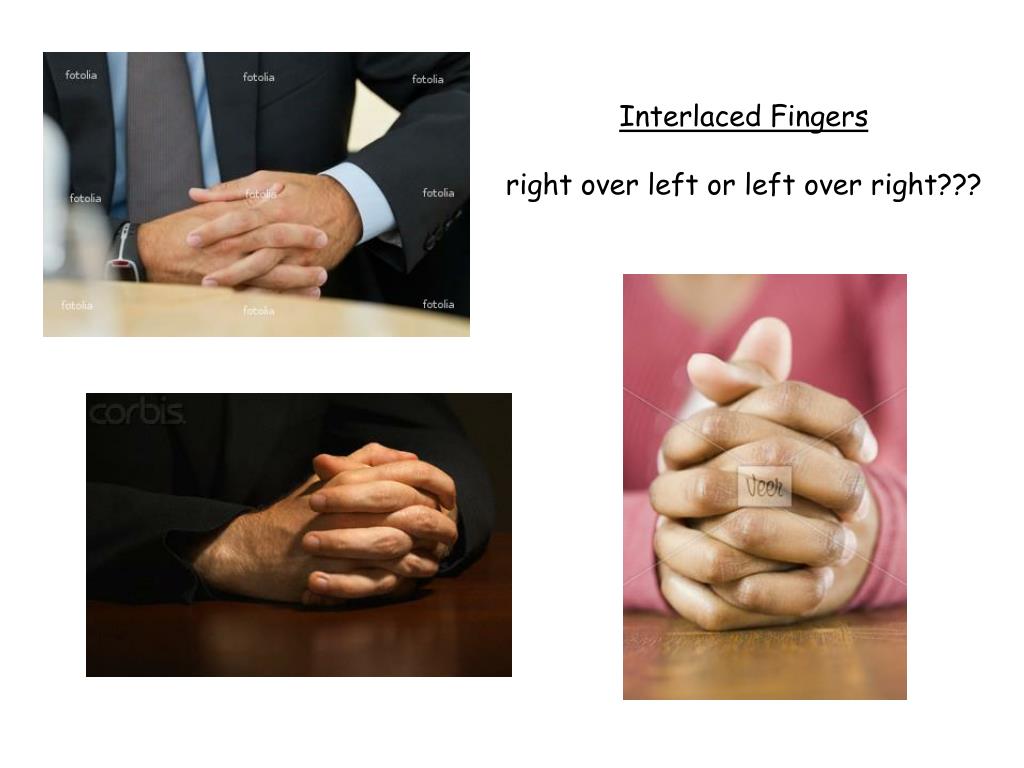

The upper thoracic/lower cervical spine–you do something with it your whole life that you don’t need to.Then over belly and a little L, a little R.Then take your hands down–how far down and still turning?.Now you can probably do a circle around the head, going anywhere you want, still turning the hands.Take R elbow to floor and notice you can do whatever you want with the elbow by the side, touching the chest, and over the head.Go back and forth and feel how different (arm touches side of face very differently on each side).Continue and shift so the inside of the R arm touches the R cheek.Turn the hands, move them up, until the inside of the L arm touches the L cheek.
 Interlace the hands in the less familiar way.
Interlace the hands in the less familiar way.  Then do the other side (L elbow on floor). Back to hands in front of face, feeling the quality of the rolling. Same position, but fix R elbow, at 90 from the body. Then back to the middle: notice that it is improved in both directions. In front of face, more or less–notice which direction more.
Then do the other side (L elbow on floor). Back to hands in front of face, feeling the quality of the rolling. Same position, but fix R elbow, at 90 from the body. Then back to the middle: notice that it is improved in both directions. In front of face, more or less–notice which direction more.  Lying face up, hands interlaced, lift elbows and roll hands (only as far as without strain). Using the distal to address the proximal. Lying face up and face down, fingers interlaced: twisting the forearms, while moving the hands up and down, and in a circle around the head. We'll also check in with a Washington Post reporter about the latest with the health care debate on Capitol Hill. We'll also hear about the dialysis industry and why critics think it is overly aggressive and in need of further regulation. Grubbs joins us in studio to tell the story of her journey from kidney donor to, ultimately, kidney doctor. During the process, Grubbs discovered racial disparities in the way donated kidneys are allocated: Approximately 1 in 3 transplant candidates are African American, but they receive only 1 in 5 of all donated kidneys. When Bay Area primary care doctor Vanessa Grubbs discovered that her boyfriend wasn’t getting the donated kidney that he desperately needed, she decided to give him one of her own.
Lying face up, hands interlaced, lift elbows and roll hands (only as far as without strain). Using the distal to address the proximal. Lying face up and face down, fingers interlaced: twisting the forearms, while moving the hands up and down, and in a circle around the head. We'll also check in with a Washington Post reporter about the latest with the health care debate on Capitol Hill. We'll also hear about the dialysis industry and why critics think it is overly aggressive and in need of further regulation. Grubbs joins us in studio to tell the story of her journey from kidney donor to, ultimately, kidney doctor. During the process, Grubbs discovered racial disparities in the way donated kidneys are allocated: Approximately 1 in 3 transplant candidates are African American, but they receive only 1 in 5 of all donated kidneys. When Bay Area primary care doctor Vanessa Grubbs discovered that her boyfriend wasn’t getting the donated kidney that he desperately needed, she decided to give him one of her own.








 0 kommentar(er)
0 kommentar(er)
